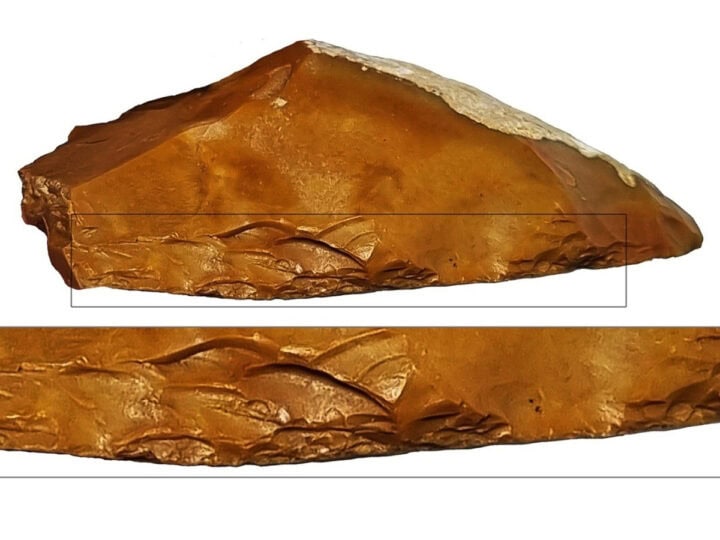Archaeologists from Tel Hai College, the Israel Antiquities Authority and the Hebrew University of Jerusalem have published an article in the scientific journal PLOS One describing the discovery of a mysterious dolmen (a large table-like stone structure) estimated to be more than 4,000 years old.
The rare find was made in a large field of dolmens adjacent to Kibbutz Shamir in the Upper Galilee. This particular dolmen is unique for its huge dimensions, the structure surrounding it and especially the artistic decorations engraved in its ceiling.
The dolmen was discovered during a visit to the site by Prof. Gonen Sharon of the Galilee Studies Program at Tel Hai. It is just one of more than 400 huge stone structures dating to the intermediate Bronze Age that are located in the dolmen field around Kibbutz Shamir.
When Sharon entered the chamber built beneath the largest dolmen, he was surprised to discover rock drawings engraved in its ceiling.

The discovery of the engravings led to a research project of the dolmen and its environs, which produced new revelations concerning the dolmen phenomenon in Israel. Thousands of dolmens are scattered across the Middle East, from Turkey to Yemen.
“This is the first art ever documented in a dolmen in the Middle East,” said Uri Berger, an archaeologist with the Israel Antiquities Authority and a partner in the study.
50-ton stone
The engraved shapes depict a straight line going to the center of an arc. About 15 such engravings were documented on the ceiling of the dolmen, spread out in a kind of arc along the ceiling. No parallels exist for these shapes in the engraved rock drawings of the Middle East, and their significance is not known.
The panel was scanned in the field by the Computerized Archaeology Laboratory of the Hebrew University. Using an innovative technique, a three-dimensional model of the engraving was produced.
“The three-dimensional scan enabled us to identify engravings that otherwise could not be seen with the naked eye,” explained Prof. Lior Grossman, the laboratory director.

The chamber inside the dolmen where the engravings were found on its ceiling measures two by three meters and the stone covering it weighs an estimated 50 tons, making it one of the largest stones ever used in the construction of dolmens in the Middle East.
The dolmen was enclosed within an enormous stone heap (tumulus) about 20 meters in diameter, and its stones are estimated to weigh a minimum of 400 tons. At least four smaller dolmens that were positioned at the foot of the decorated dolmen were seen inside the stone heap. This is the first time such a hierarchical dolmen has been identified in the Middle East.
The huge dolmen at Kibbutz Shamir is just one of hundreds of enormous densely scattered structures in this region. Archeologists say it bears witness to the existence of a significant and established governmental system in the region during the “Middle Ages” of the Bronze Age.

“The gigantic dolmen at Kibbutz Shamir is without doubt an indication of public construction that required a significant amount of manpower over a considerable period of time,” said Sharon.
“During that time all of those people had to be housed and fed. The building of such a huge construction necessitated knowledge of engineering and architecture that small nomadic groups did not usually possess. And even more importantly, a strong system of government was required here that could assemble a large amount of manpower, provide for the personnel and above all direct the implementation and control of a large and lengthy project.”
The dolmen field at Kibbutz Shamir was first surveyed by the late Moshe Kagan in the 1950s. More than 400 huge structures overlooking the Hula Valley were identified in the field.
The circumstances surrounding the construction of the dolmens, the technology used and the culture of the people who built them are still one of the great mysteries of the archeology of Israel.

















